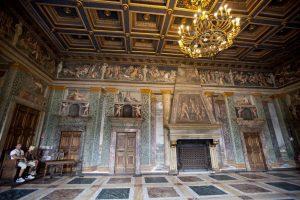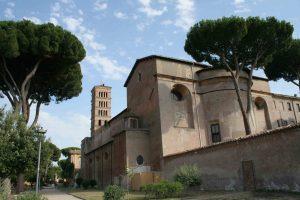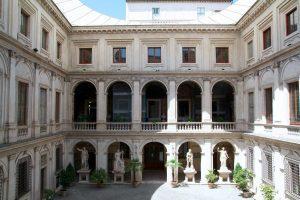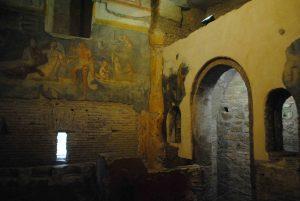If you know where to look, Rome is one of the most peaceful capital cities in the world. Get away from the traffic and the crowds queuing to get into the Vatican Museums, and you’ll discover quiet piazzas, tranquil parks, and museums where the statues outnumber the visitors.
I’ve spent the last three years living in Rome, exploring the city on my own or in the company of a tour guide from my company, Through Eternity. Nothing beats exploring Rome with a local – someone who knows the city’s secrets – showing you another side of the Eternal City. Even famous places such as the large archaeological parks of Ancient Rome have fascinating hidden sites, and the centro storico is full of forgotten treasures. With our private tours of Rome you can enjoy the privilege of experiencing them first, in peace and quiet, before they’re discovered by the tourist hordes.
From Renaissance luxury villas to cemeteries, here are some sites that don’t attract the visitors they deserve.
Villa Farnesina

This early 16th century villa was the private home of the banker Agostino Chigi, who was one of the wealthiest men in Europe. If you’re fabulously wealthy and you need a painter to decorate your villa, who do you hire? None other than Raphael.
Indeed, Chigi had an eventful life, and was closely involved with some of the most famous men and women of the Renaissance – he was married to the celebrity courtesan, Imperia, and managed the finances of popes such as Julius II.
Private homes don’t get much more luxurious than this. Villa Farnesina is undoubtedly one of the most beautiful buildings in Rome, filled with frescoes by Raphael and other talented Renaissance painters. Most striking of all is the Loggia of Cupid and Psyche, decorated by Raphael and his workshop. Cupid and Psyche celebrate their wedding feast, surrounded by Olympian gods and festoons of fruit and flowers.
Upstairs, the Hall of Perspectives cleverly creates the illusion of being outside, gazing at distant landscapes. In another room, Chigi even hired an artist to paint his personal horoscope on the ceiling.
Aventine Hill

Although the Aventine is primarily a residential neighbourhood, with more churches than shops or restaurants, there’s still plenty to see. A walk through the shady streets is an ideal way to spend a hot afternoon, passing overgrown gardens and elegantly decaying villas. The Giardino degli Aranci (“orange garden”) offers some of the most spectacular views of Rome, while just down the street, those in the know queue up to look through a very special keyhole.
If you’re in the area on a Sunday evening, make sure you visit Sant’Anselmo, where you can listen to some Gregorian chanting, sung by the monks from the adjoining Benedictine monastery.
Palazzo Altemps

Once a private home, Palazzo Altemps is now used to house part of the collection of the National Roman Museum. Highlights include the Ludovisi Battle Sarcophagus – a marble sarcophagus from the 3rd century that vividly depicts a dramatic battle between Romans and barbarians – and some striking statues of gods and mythological figures.
My personal favorite is the Ludovisi Gaul – a powerful statue of a defeated Gaul stabbing himself in the neck while supporting his dying wife. Over the top, yes, but undeniably moving, as the statue seems to recognize the bravery of the Gaul and his wife in their last moments. You can find out more on the official website: Palazzo Altemps Museum
The Roman Houses of Santi Giovanni e Paolo

It’s the details that make the Roman Houses so evocative – a colourful fresco of the goddess Proserpine; a faded vine leaf on the wall; an astrological symbol; a section of a subterranean street…Despite centuries of excavation, many of Rome’s treasures remain underground.
Protestant Cemetery

The Protestant Cemetery has long been the favoured burial place of non-Catholic foreigners who die in Rome. Among the cluster of tombs on the hill you’ll find inscriptions in Russian, Chinese and Arabic, as well as the graves of some of England’s best-loved poets. The Romantic poet Percy Shelley is buried here, as well as John Keats, whose tombstone reads “Here lies one whose name was writ in water”. The oldest tomb, however, is just beyond the cemetery walls – the enormous white pyramid dedicated to a Roman nobleman, which pre-dates the Colosseum.
Although the cemetery attracts a few visitors making poetic pilgrimages, it always retains the air of a quiet sanctuary, a haven for those seeking a bench in the shade of the cypresses. Perpetually serene and beautiful, it only takes a single visit to understand Shelley’s comment: “It might make one in love with death, to think that one should be buried in so sweet a place”.
Alexandra Turney works for Through Eternity Tours

